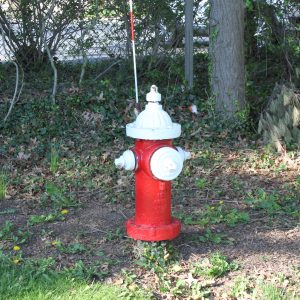A Billion Gallons of Water Being Used to Keep Lawns and Gardens Green
Plainview Water District is Committed to Reducing Irrigation Water Use this Summer
Plainview, NY (May 26, 2021)— With irrigation systems now online and causing the community’s water demand to spike significantly, the Plainview Water District (PWD) is reminding residents of their responsibility to help Preserve Plainview through water conservation. Water usage and customer bills can triple during the summer due to irrigation systems coming online. As much of the water pumped is wasted in the process due to inefficient practices, the District is reminding all residents of the ways they can help to Preserve Plainview and help create a more sustainable water supply.
“Because our sprinkler systems typically go off during the hours we are asleep, most people don’t realize how much water they are using on a daily basis,” said PWD Chairman Marc Laykind. “Our Preserve Plainview initiative aims to help our residents, not only realize just how much water their irrigation system is consuming to keep their lawn green, but provide them with the tools and tips to accomplish the same goal while using significantly less water.”
Last year, the District pumped more than 1.8 billion gallons of water to meet the needs of the 10,000 families it serves in the Plainview-Old Bethpage community. 1.1 billion gallons were pumped between May and September 2020, with most of that water being pumped between June and August. This spike of water pumpage can almost singularly be attributed to irrigation systems trying to keep up with the summer heat. This increase not only puts a strain on our region’s sole-source aquifer, but it significantly taxes the District’s supply and distribution system immensely as it tries to keep up with demand.
“It is pretty staggering when you look at the data and see how much water is being drawn from the ground to keep our lawns green,” said PWD Commissioner Amanda Field. “It is even more eye opening when you think of the massive expense this community shoulders from an infrastructure perspective just to make sure our systems have the capacity to handle this increased demand for this short period of time during the summer. Our goal with the Preserve Plainview initiative is to tell people not to water their lawns, but rather ensure they are doing so in an efficient, responsible manner.”
Installing a smart controller is the single greatest way to conserve a significant amount of water while keeping lawns and gardens healthy. By connecting with local weather stations and adjusting watering schedules based on the forecast, these systems better predict a lawn’s water needs, which is typically only an inch of water per week.
Residents are also urged to follow the Nassau County Lawn Watering Ordinances, which provide optimal times to water your lawn. The ordinance states that even-numbered homes can only water on even-numbered days, while odd-numbered homes can only water on odd-numbered days. Non-numbered homes follow the even-numbered homes schedule. It also states that no lawn watering can be done between the hours of 10:00 a.m. and 4:00 p.m. on any day.
The District also has more tips that can help residents promote a healthier lawn and garden this summer while also cutting back on water waste:
- Nassau County’s ordinance also requires rain sensors on every lawn irrigation system. Make sure they are installed on your system and working properly.
- Test your lawn irrigation system’s watering distance so that water is not hitting your house, going into the street, or beyond your property and lawn.
- All hoses for exterior water use must be fitted with a hand-operated automatic-off nozzle valve.
- The hosing of driveways, sidewalks, or streets is prohibited.
- Reduce the amount of time you water during each irrigation zone.
- Consider hiring a reputable lawn irrigation company to make sure your lawn is properly irrigated and that all of your equipment is operating efficiently.
“The adoption of water-saving technology, as well as the implementation of water conservation habits, will significantly reduce your overall water consumption,” said PWD Commissioner Andrew Bader. “Even if everyone in this community contributed to our conservation efforts in the smallest way, collectively they will have an enormous impact. Avoid the sticker shock of second, and, even more importantly, third quarter bills by implementing some of these tips into your daily routine.”


